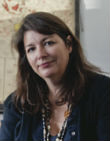Last of two parts
NEW YORK – Ask scientists who study ancient climates what worries them the most about a higher CO2 world and the likely answer will involve sea-level rise.
The levels of the world’s oceans and seas are ephemeral things. They rise and fall with the tides once or twice a day depending on location. Take a step back from these daily variations, though, and the “level” of the sea is anything but constant.
Supporter Spotlight
From the perspective of ancient climates, changes in sea level can be thought of as the addition or subtraction of water. The world’s oceans are really big bathtubs: Add water to them and their levels rise, remove water and they fall. On geologic timescales, the primary way to change the amount of water in the oceans is through the growth and decay of large ice sheets on land. Icebergs floating in the water don’t count. Like ice cubes, they merely displace water. Their melting doesn’t add any more water to the world’s bathtubs, just as a melting ice cube doesn’t cause the water in the glass to overflow.
 Rob DeConto |
At the peak of the last ice age about 20,000 years ago, global sea level was nearly 400 feet lower, with large ice sheets on North America and Europe accounting for much of the water removed from the ocean.
Today, most of those ice sheets are long gone, but they didn’t just gradually disappear since the last ice age. High rates of sea-level rise are particularly evident during warming intervals in the past, when atmospheric CO2 levels rose rapidly and the ice sheets melted. “We know from the geologic record that sea level has changed at rates of meters per century (during these times),” says Maureen Raymo, research professor at the Lamont-Doherty Earth Observatory of Columbia University.
Present-day rates of sea-level rise, about an inch per decade, are tiny in comparison to those in the geologic record. “In the last century, thermal expansion has been the primary driver of sea-level change,” notes Rob DeConto, professor of climatology at University of Massachusetts-Amherst. Liquids expand when heated, even a mass of water like an ocean, and this warming of the oceans has dominated recent sea-level rise.
Every indication is that thermal expansion will not dominate rates of sea-level rise in the future, however. As Earth’s climate marches toward equilibration with present-day CO2 levels, the climate will continue to warm. And this warming threatens the stability of a potentially much, much larger source for sea-level rise — the world’s remaining ice sheets.
Supporter Spotlight
“In this century, melting glaciers will dominate sea-level rise,” adds DeConto. “We are talking about an ability to change how the planet looks from space.”

Earth’s Ice Sheets and Sea Level Contributions: Left: The Greenland Ice Sheet (GIS) is the Northern Hemisphere’s largest. Right: Antarctica has two ice sheets, the West Antarctic Ice Sheet (WAIS), and the East Antarctic Ice Sheet (EAIS). In red is the sea level rise that would result from complete melting of ice sheet. Images from Google Earth.
Present Day Ice Sheets
To understand future sea-level change, you need to understand the ice sheets — both in terms of how much they could raise sea level, and how susceptible they are to melting with future warming.
There are three main ice sheets on Earth today. The Greenland Ice Sheet, covering nearly all of Greenland, is the only large ice sheet in the Northern Hemisphere. Over two miles thick in places, the ice sheet has an estimated 1.8 million cubic miles of ice, or enough to raise sea level by 24 feet if all the ice melted, according to research published in 2001.
In the Southern Hemisphere, Antarctica is split between two ice sheets. The smaller West Antarctic Ice Sheet has a similar volume of ice to Greenland and would raise sea level about 16 feet if it melted. In contrast, the East Antarctic Ice Sheet is by far the largest ice sheet in the world. Over two and a half miles thick across a broad area of Antarctica, the East Antarctic Ice Sheet contains nearly 14 million cubic miles of ice, and if melted, would raise sea level an almost incomprehensible 170 feet, according to 2001 research. For context, Jockey’s Ridge near Nags Head is 100 feet high.
Ice Sheet Stability
How much warming can the ice sheets withstand before they collapse? It is the million-dollar question for Earth scientists, and an area of intensive research today. DeConto and colleagues have pioneered approaches using computer models to estimate how sensitive ice sheets are to changes in temperature and CO2. Using paleoclimate information, they demonstrated that the growth of ice sheets is highly sensitive to atmospheric CO2 levels.
 Maureen Raymo |
 Peter deMenocal |
Ice sheet loss is more complicated than ice sheet growth, however. For one, the sensitivity of the ice sheet to melting depends on whether the end of the ice sheet is located on land (“land-based”) or in the ocean (“marine-based”). An ice cube in a glass of water melts much faster than one put on the counter; accordingly, marine-based ice sheets that terminate in the water exhibit faster melting rates than those that end on land.
A second complication is that ice sheets can have “multiple equilibria,” according to DeConto. From his modeling work, DeConto concludes “the Greenland Ice Sheet is relatively stable, even at today’s CO2 levels. But if you removed the Greenland Ice Sheet, it could not grow back.”
The West Antarctic Ice Sheet is the only current ice sheet that is largely marine-based, and is DeConto’s main concern for sea-level rise in a 400 ppm world. “The West Antarctic Ice Sheet is bathed in ocean water. Once the ocean gets too warm to support these ice shelves, most of the ice sheet will be lost. And sea level will then rise 3.5 meters (11 feet),” says DeConto.
Even though the melting of the West Antarctic Ice Sheet would likely take at least several hundred years, stopping the melting once it started would be nearly impossible. With warmer ocean water driving the melting, “you would have to cool the oceans down in order to get the West Antarctic Ice Sheet back (and prevent sea-level rise),” adds DeConto. “That’s essentially an impossible geoengineering problem.”
Although the Greenland and East Antarctic Ice sheets are not considered risks for catastrophic melting at current CO2 levels, some degree of melting from both would also contribute to sea-level rise. As a result, “If you stabilize CO2 at current levels, a five-meter (16-foot) rise in sea level is not out of the realm of possibility,” cautions Raymo. “Think about what that would do to the world’s population centers”. An interactive feature published last fall by The New York Times gives several examples of how sea-level rise could affect coastal urban areas in the United States.
DeConto is quick to caution that modeling studies of ice sheet growth and decay have plenty of limitations. Alarmism is, unfortunately, not one of them. “Time and again, we have a problem making models as sensitive as they need to be. They are not sensitive enough to match the geologic record. If anything, our models are too conservative. And that’s scary,” says DeConto.

Changing Cities with 12 Feet of Sea-level Rise: Twelve feet of sea-level rise would occur with melting of the marine-based portions of the West Antarctic Ice Sheet. Images: Baden Copeland/New York Times.
Only Getting Slushier
Unfortunately, 400 ppm CO2 is not this story’s end. According to NOAA, atmospheric CO2 levels were increasing by 2.65 ppm per year in 2012, the highest year-over-year increase since recordkeeping began in 1959. If these trends continue, “the West Antarctic Ice Sheet will deglaciate, it’s only a question of time,” says DeConto.
At current trajectories, atmospheric CO2 levels could approach 800 to 900 ppm by the end of the century. “That plunges you into a time of warmth from 50 million years ago that you wouldn’t even recognize,” says Raymo. “All the ice sheets would eventually melt over the next few thousand years. Sea level would end up being over 60 meters higher.”
Were that to happen, everywhere east of I-95 in North Carolina would eventually be underwater. Fayetteville would become beachfront property.
The economic costs associated with these scenarios are difficult to contemplate. As it is, “We’re starting to see the economic costs of climate change now, especially in insurance,” contends Peter deMenocal, professor and chair of the Department of Earth and Environmental Sciences at Columbia.
“Consider federal home insurance for coastal cities. At what point of sea-level rise will that become unaffordable for the federal government?” says deMenocal. “We’re talking about trillions of dollars here.”
And the major players in global sea level—the ice sheets — have yet to join the game.








